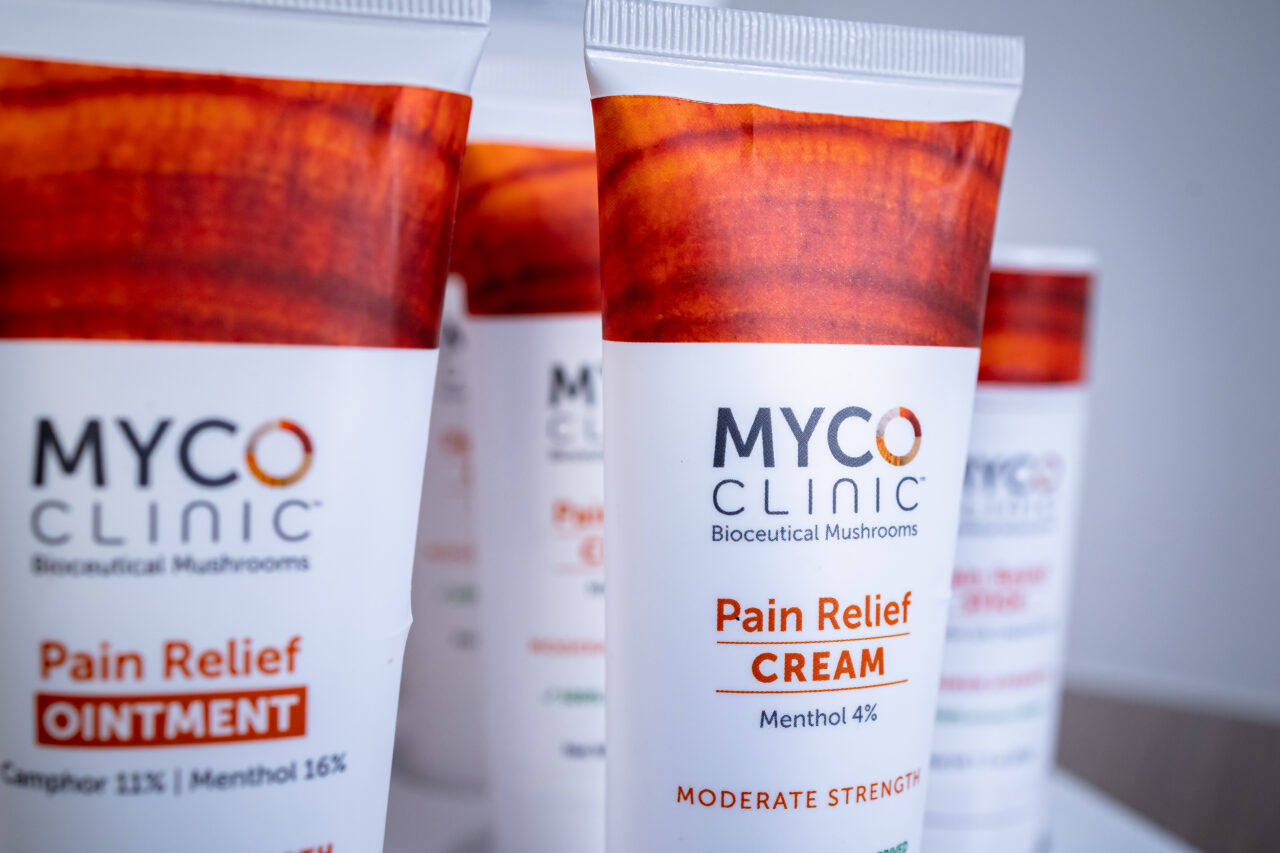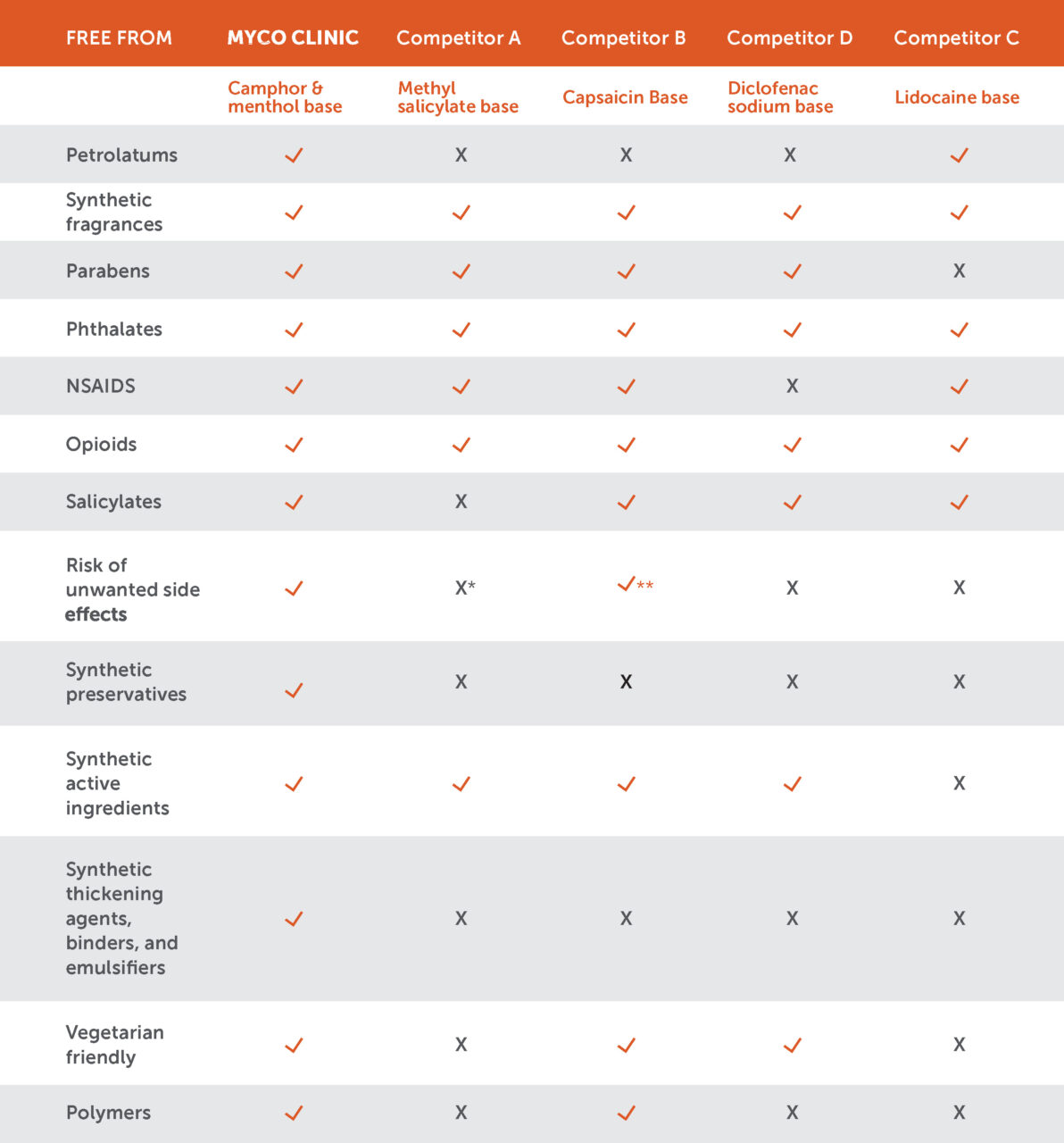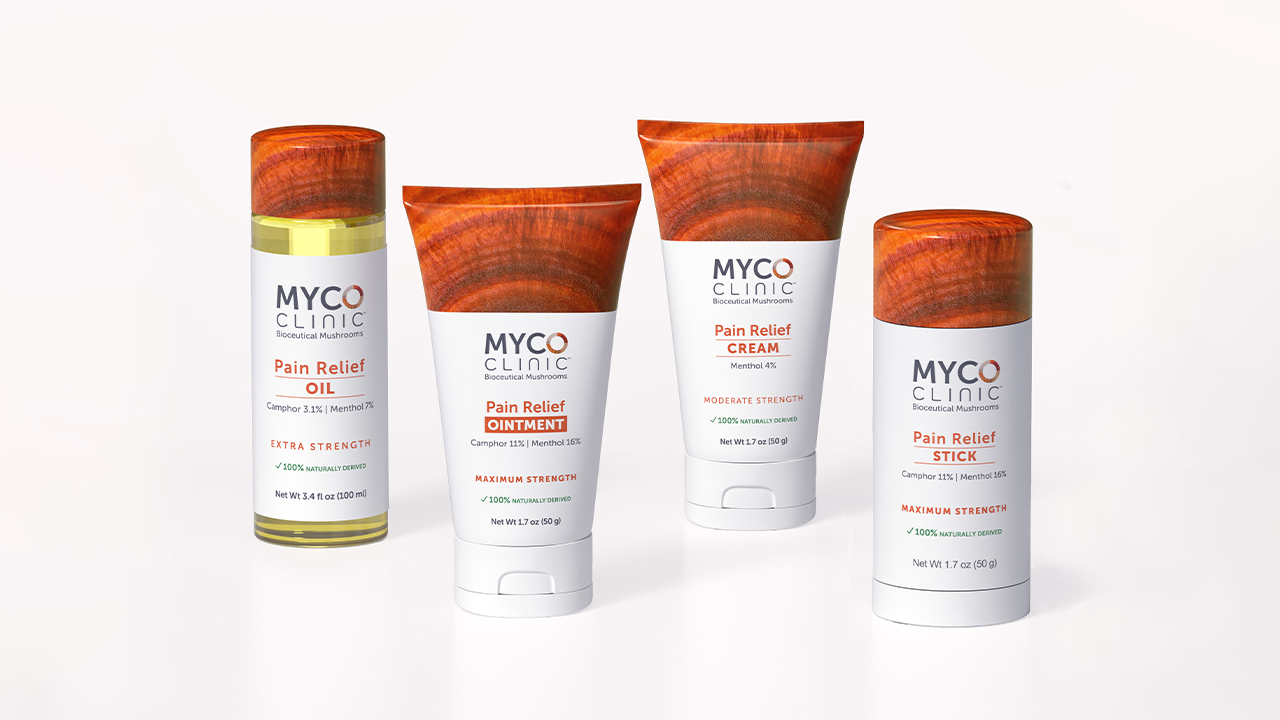Many of your patients probably rely heavily on topical pain relief products, especially if they wish to avoid internal medications.
While they are generally recognized as safe and effective (GRASE) for the average consumer, some have contraindications or present a risk for unwanted effects. Additionally, your patients may have preferences for natural and/or environmentally friendlier products.
For these reasons, we’ve created a breakdown of typical product types on the market for pain relief to help you make the decision on what to recommend and why. In addition, we’ve provided a FREE chart for an easy side-by-side comparison.
Ingredients in Topical Analgesics

The Food and Drug Administration (FDA) abides by title 21 of the Code of Federal Regulations (CFR), to ensure public safety. This includes the classification and approval of ingredients used in OTC pharmaceuticals.
The ingredients in medicines are divided into active pharmaceutical ingredients (APIs) and inactive ingredients.
Active ingredients in topical analgesics
“According to 21 CFR 210.3(b)(7), an active ingredient is any component of a drug product intended to furnish pharmacological activity or another direct effect in the diagnosis, cure, mitigation, treatment, or prevention of disease, or to affect the structure or any function of the body of humans or other animals.”
The most common OTC topical analgesics contain 1-3 primary active ingredients listed below:
- Menthol
- Camphor
- Capsaicin
- Methyl salicylate
- Diclofenac sodium
- Lidocaine
Our active ingredients are camphor and menthol, two plant extracts scientifically proven to relieve pain and listed in the FDA monograph for external analgesics (pain relievers).
Inactive ingredients in topical products
“According to 21 CFR 210.3(b)(8), an inactive ingredient is any component of a drug product other than the active ingredient.”
Inactive ingredients in topicals may not pose the same potential risks as active ingredients but it is still a likely concern to your patients—particularly if you treat Millennials and Generation Z, who are largely more attracted natural and vegetarian or vegan products.
A Comparison of Topical Pain Relief Products on the Market

Topical pain relievers can be life-changing for your patients. As you know, these ointments, gels, creams, and oils are applied to the site of pain to reduce the pain.
Pain relief topicals on the market, generally classified by their active ingredients, but you may also find them organized by their hype ingredient like trendy CBD-based products.
For an easy side-by-side comparison, please review the infographic below.

*May cause unwanted side effects with excessive use.
**May burn sensitive skin. People allergic to peppers should not use this product.
Counterirritant Topical Pain Relievers
Counterirritants are among the most widely available topical pain relief products on the market. Their cooling and/or heating sensation offers the feeling of immediate relief for the typical patient.
They act on TRPV thermal pathways to provide analgesia by activating and then desensitizing epidermal nociceptors. You can explain it simply by telling your patients that they interrupt pain signals to the brain with heating and/or a cold sensation.
Menthol, camphor, capsaicin, and methyl salicylate are all considered counterirritants, which we will break down below.
What are menthol and camphor topical products?
Menthol, derived from the mint family, and camphor, derived from camphor trees, are both terpenes thought to support plant health. These terpenes are popular in natural and synthetic-based topicals due to the immediate cooling and heating sensation.
Like other counterirritants, they induce vasodilation, which improves blood circulation at the source of application. For this reason, they are favorable alternatives to internal analgesics.
Potential side effects of menthol and camphor products
Menthol and camphor rarely cause unwanted side effects when taken as directed. Some people, however, may be extra sensitive to cold and hot sensations.
That said, some chemical burns have been reported due to rare sensitivities to menthol. Additionally, heat increases the risk of unwanted side effects. Therefore, menthol products should not be used with heating pads or stones as well due to the potential risk of excessive skin absorption or even tissue death.
It is advisable to test on a small area of the body or start with a lower concentration product.
What are methyl salicylate topicals?
Methyl salicylate (oil of wintergreen) is used on its own or in combination with menthol and/or camphor in many topical pain relief products.
Salicylates like methyl salicylate occur naturally in plants to help protect the plant from environmental stressors and pathogens. This chemical produces a warming effect on the skin, leading to a reddish appearance. This is why you may also hear them described as rubefacients [Latin: to make red].
The topical application induces vasodilation, which increases blood flow to the muscles and joints for topical pain relief.
Potential side effects of methyl salicylate products
When used in moderation, methyl salicylate products are generally recognized as safe and effective (GRAS). However, they can cause allergies or unwanted side effects in some people, especially when used beyond the recommended dose.
Unfortunately, in recent years, there has been an increase in documented reports of toxicity poisoning related to excessive use of methyl salicylate topicals, including a 17-year-old cross-country runner. Abuse of methyl salicylate topical application can result in poisoning if it enters the bloodstream.
In addition, they are contraindicated for patients who are sensitive to Aspirin or taking medications that may negatively interact with salicylates.
Anticoagulant medications should be especially avoided, which include:
- warfarin
- anisindione
- dicumarol
People with renal failure, diabetes, and blood disorders have been subject for concern. Patients with these conditions should consult with a treating physician before using methyl salicylates.
What are capsaicin based topicals?
Potential side effects of capsaicin products
Capsaicin products are relatively safe, however, any patient allergic to chili peppers should avoid them. Some patients may not wish to use them for fear of accidentally getting it in their eyes.
Nonsteroidal Anti-inflammatories in Topicals
What are NSAID topical pain relievers?
Nonsteroidal anti-inflammatory drugs (NSAIDs) are among the most commonly used class of analgesics. Diclofenac sodium is the active ingredient in the topical NSAIDs.
It reduces pain and inflammation by blocking cyclooxygenases (COXs) enzymes soon after applying it on the skin at the source of discomfort.
Potential side effects of NSAIDS
NSAIDs are quite helpful for the average population for short-term use. However, the medication is loaded with contraindications and risks for unwanted side effects after long-term use.
We’ve highlighted the most common contraindications and effects below.
It is common knowledge that long-term use of NSAIDS have been linked to stomach and intestinal inflammation. This has been linked to the dual inhibition of COX-1 and COX-2 enzymes, the mechanism of action of NSAIDS. As a result, any patient with a history of bowel disease like Crohn’s disease should avoid this class of medications.
NSAIDS, including topical diclofenac sodium, may increase the risk for a heart attack or a stroke, particularly after long-term use. For this reason, people with diabetes, heart disease, cholesterol should consult a treating physician before using these topicals.
Likewise, it can take a toll on excretory organs, particularly the kidneys and liver.
In addition, diclofenac sodium has been linked to fertility, gestation, lactation concerns. Anyone concerned about their reproductive health or nursing should consult a doctor before using this medication. The risk is particularly significant in the 2nd half of pregnancy. According to the FDA,
“…the drugs can cause rare but serious kidney problems in the unborn baby, which can lead to low levels of amniotic fluid (the protective cushion surrounding the unborn baby) and the potential for pregnancy-related complications.”
Finally, patients who use it should also avoid real or artificial sunlight.
Anesthetic Topical Pain Relievers
Anesthetics are commonly administered before small procedures to produce a numbing sensation to reduce discomfort. They can be orally or topically administered.
The regional anesthetics are available over the counter or prescribed by a doctor if additional protocols are needed. Lidocaine is the most common topical anesthetic your patients may encounter.
What are lidocaine topical products?
Potential side effects of lidocaine
When used as directed and sparingly, lidocaine is generally considered safe. However, excessive use of lidocaine, such as covering large areas of the body or using on open wounds, can cause the medication to become transdermal and seep into the bloodstream.
“Repeated doses of lidocaine may cause significant increases in blood levels with each repeated dose because of slow accumulation of the drug and/or its metabolites.”
When “plasma concentrations rise to toxic levels,” unwanted side effects occur, which range from mild to life-threatening.
According to the authors of Lidocaine, “Lidocaine is thought to be more neurotoxic than other local anesthetics, especially when high concentrations are applied directly to nervous tissue.”
Furthermore, the contraindications, including potential drug interactions, are quite extensive. For this reason, anyone with a history of adverse reactions, acutely or chronically ill, elderly, under 18, or taking medications should consult a doctor before using lidocaine.
Secondary Ingredients in Common OTC Topical Pain Relief Products

Commercial products on the market largely feature synthetic ingredients to assist with binding, consistency, and texture.
While synthetic ingredients may be qualified as “GRAS” according to the food and drug administration (FDA), they may not appeal to patients concerned with the potential environmental toxins and chemical fillers.
They also may feature lanolin, an emollient derived from sheep sebaceous glands. It can help the skin retain moisture, which is an excellent property for topicals. However, it may be a concern to some patients who prefer vegan or vegetarian products.
These products may also contain polymers (e.g., carbomer), petrolatums (e.g., petroleum jelly or mineral oil), phthalates, and other synthetic fillers that can negatively affect health or the environment.
If your patients are looking for “clean formulas,” products with camphor, menthol, and/or capsaicin are available with completely natural secondary ingredients, including MYCO CLINIC. But remember, counterirritant products containing synthetic ingredients are also available in drug stores.
So do your due diligence to research products thoroughly based on your clinical goals and patients’ desires.
Why Choose MYCO CLINIC Topicals?

MYCO CLINIC topicals were developed to help clinicians treat pain safely and effectively using nature’s most powerful ingredients, including FDA listed analgesic ingredients, menthol and camphor. In addition, all secondary ingredients are completely sourced from nature.
Since our ingredients are non-transdermal and completely naturally derived, the risk of unwanted side effects and contraindications are minimal, if at all. Some patients may be sensitive to hot and cold sensations, nonetheless, so it is advisable to conduct a patch test with a new patient with a history of sensitivity.
References
Anderson A, McConville A, Fanthorpe L, Davis J. Salicylate Poisoning Potential of Topical Pain Relief Agents: From Age Old Remedies to Engineered Smart Patches. Medicines (Basel). 2017;4(3):48. Published 2017 Jun 30. doi:10.3390/medicines4030048
Barkin RL. The pharmacology of topical analgesics. Postgrad Med. 2013;125(4 Suppl 1):7-18. doi:10.1080/00325481.2013.1110566911. https://pubmed.ncbi.nlm.nih.gov/24547599/#:~:text=Salicylates%2C%20along%20with%20capsaicin%2C%20menthol,and%20then%20desensitizing%20epidermal%20nociceptors. Accessed January 2, 2023.
Beecham GB, Nessel TA, Goyal A. Lidocaine. [Updated 2022 May 23]. In: StatPearls [Internet]. Treasure Island (FL): StatPearls Publishing; 2022 Jan. https://www.ncbi.nlm.nih.gov/books/NBK539881/ Accessed January 2, 2023.
Center for Drug Evaluation and Research. (n.d.). Inactive Ingredients Search FAQ. U.S. Food and Drug Administration. Retrieved April 30, 2023, from https://www.fda.gov/drugs/drug-approvals-and-databases/inactive-ingredients-approved-drug-products-search-frequently-asked-questions
Chin RL, Olson KR, Dempsey D. Salicylate toxicity from ingestion and continued dermal absorption. Cal J Emerg Med. 2007;8(1):23-25. https://www.ncbi.nlm.nih.gov/pmc/articles/PMC2859737/ Accessed January 2, 2023
Craighead DH, Alexander LM. Topical menthol increases cutaneous blood flow. Microvasc Res. 2016 Sep; 107:39-45. doi: 10.1016/j.mvr.2016.04.010. Epub 2016 Apr 27. PMID: 27131832;PMCID:PMC5406845. https://www.ncbi.nlm.nih.gov/pmc/articles/PMC5406845/. Accessed January 3, 2023.
Dalkilic, N., Tuncer, S. & Burat, I. Dexmedetomidine augments the effect of lidocaine: power spectrum and nerve conduction velocity distribution study. BMC Anesthesiol 15, 24 (2015). https://doi.org/10.1186/s12871-015-0009-9
Dasgupta A, Wahed A. Chapter 19 – Common poisonings including heavy metal poisoning. Clinical Chemistry, Immunology and Laboratory Quality Control (2nd ed). 2021;405-419. https://www.arthritis-health.com/treatment/medications/over-counter-topical-arthritis-pain-relief. Accessed January 2, 2023
de Falla K. Over-the-counter topical arthritis pain relief. Arthritis-Health. https://www.arthritis-health.com/treatment/medications/over-counter-topical-arthritis-pain-relief. Accessed January 2, 2023
Duthie GG, Wood AD. Natural salicylates: foods, functions and disease prevention. Food Funct. 2011;2(9):515-520. doi:10.1039/c1fo10128e
Federal Register (Ed.). (1983, February 8). Federal Register. 48(27). Accessed April 30, 2023 https://tile.loc.gov/storage-services/service/ll/fedreg/fr048/fr048027/fr048027.pdf
Food and Drug Administration. FDA warns that using a type of pain and fever medication in second half of pregnancy could lead to complications. U.S. Food and Drug Administration. https://www.fda.gov/news-events/press-announcements/fda-warns-using-type-pain-and-fever-medication-second-half-pregnancy-could-lead-complications Accessed January 8, 2023
Hotz-Behofsits CM, Walley MJ, Simpson R, Bjarnason IT. COX-1, COX-2 and the topical effect in NSAID-induced enteropathy. Inflammopharmacology. 2003;11(4):363-370. doi:10.1163/156856003322699546
Kotaka T, Kimura S, Kashiwayanagi M, Iwamoto J. Camphor induces cold and warm sensations with increases in skin and muscle blood flow in human. Biol Pharm Bull. 2014;37(12):1913-1918. doi:10.1248/bpb.b14-00442. https://pubmed.ncbi.nlm.nih.gov/25451841/. Accessed January 3, 2023.
National Library of Medicine. Diclofenac topical (arthritis pain): MedlinePlus Drug Information. MedlinePlus. https://medlineplus.gov/druginfo/meds/a611002.html. Accessed January 3, 2023.
National Institutes of Health. (n.d.). Lidocaine ointment USP, 5% (spearmint flavored). U.S. National Library of Medicine. Retrieved January 8, 2023, from https://dailymed.nlm.nih.gov/dailymed/fda/fdaDrugXsl.cfm?setid=1e8239f6-8d53-4b04-8bf8-c2cefe3ab5c3&type=display
Poison Control. Lidocaine can cause harmful effects. Poison Control. https://www.poison.org/articles/lidocaine-can-cause-harmful-effects-172#:~:text=For%20example%2C%20covering%20a%20large,treated%20area%20also%20increases%20absorption. Accessed January 8, 2023.
Üstün R, Aden M, Oğuz EK, Taşpınar F, Şeker A. Healing effect of Hericium erinaceous in experimental peripheral neuropathy model [abstract taken from Anatomy: International Journal of Experimental & Clinical Anatomy. 2019 Supplement;13(S1): S37.]. EBSCO Information Services.
Stanos S, Tyburski M. Counterirritant. ScienceDirect Topics. Minor and Short-Acting Analgesics Including Opioid Combination Products. In: Raj’s Practical Management. 4th ed. 2008:613-641. https://www.sciencedirect.com/topics/neuroscience/counterirritant#:~:text=Review%20and%20Physiology-,Counterirritants%20such%20as%20capsaicin%2C%20camphor%2C%20menthol%2C%20and%20garlic%20represent,sensory%20neurons%20(Table%2037.17). Accessed January 3, 2023.
Sundstrup E, Jakobsen MD, Brandt M, et al. Acute effect of topical menthol on chronic pain in slaughterhouse workers with carpal tunnel syndrome: triple-blind, randomized placebo-controlled trial. Rehabil Res Pract. 2014; 2014:310913. doi:10.1155/2014/310913

